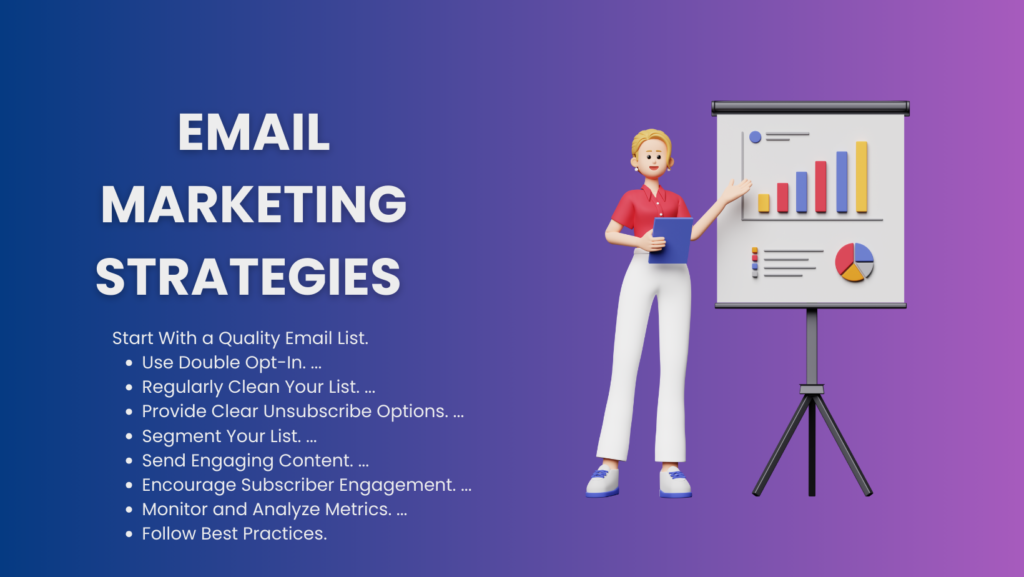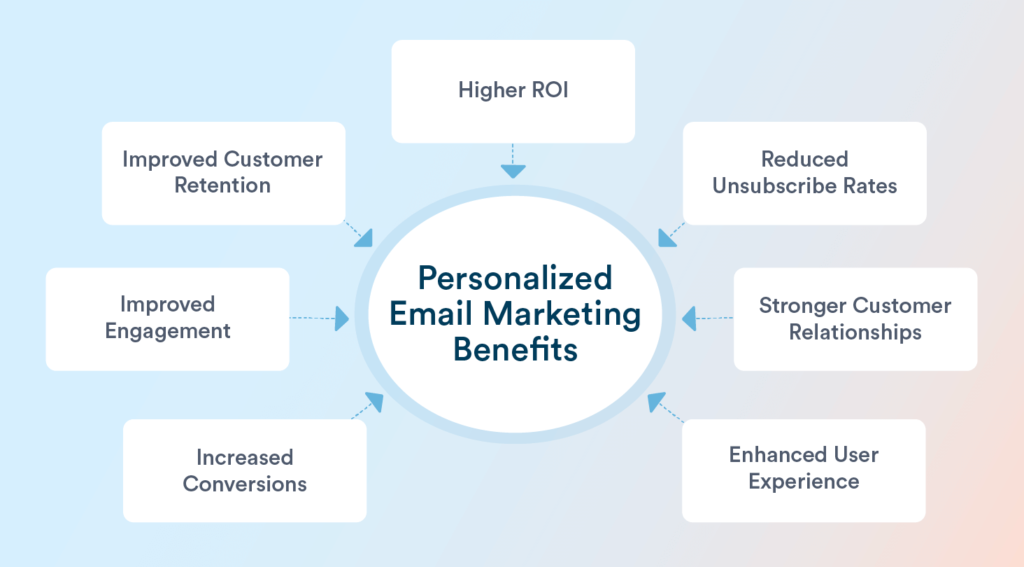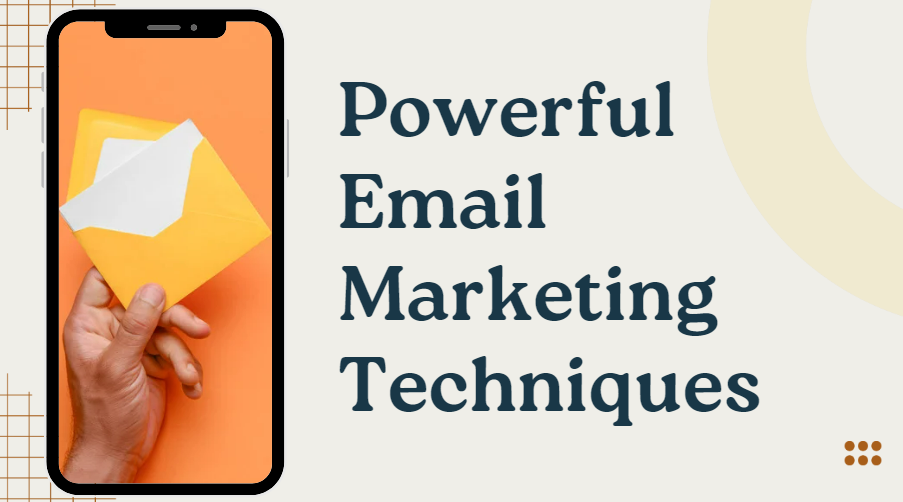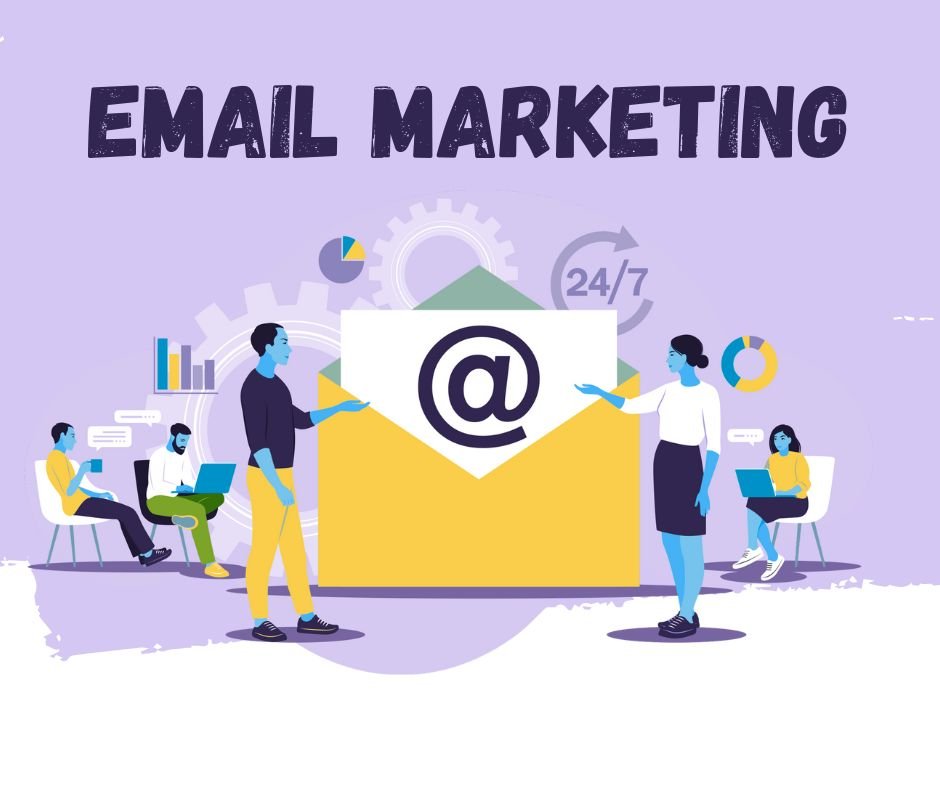Have you ever received an email that made you stop and click? Maybe it was an offer you couldn’t resist or an invitation that felt personal. Now, imagine if your emails could do the same for your business. Email marketing is one of the best ways to stay connected with your audience, but let’s face it: not all email campaigns hit the mark. So, what does it take to create an email campaign that actually works?
In this blog, I’m going to walk you through some simple, effective email marketing strategies that really work. Whether you’re new to email marketing or looking to improve your existing campaigns, these tips will help you get better results.
1. Start With a Quality Email List

First things first: not all email lists are created equal. It’s tempting to think that the more emails you have, the better. But here’s the truth—it’s about quality, not quantity. A list full of people who don’t care about your business won’t do you any good.
So, how do you build a list of engaged people? One of the best ways is to offer something valuable in exchange for their email, like a free guide, discount, or access to exclusive content. Email Marketing Strategies . This gives people a reason to give you their email and ensures they’re interested in what you offer. And remember, keep your list clean by removing inactive emails regularly so that you’re only sending to people who actually want to hear from you.
2. Personalization Makes a Huge Difference

Have you ever gotten an email that starts with “Dear [First Name]”? Feels more personal, right? Personalizing your emails doesn’t just mean using someone’s name—it’s about creating content that speaks directly to them. Email Marketing Strategies .
For example, if someone made a purchase from your store, you can send them a follow-up email recommending similar products they might like. Email Marketing Strategies . The more relevant your emails are to the person receiving them, the more likely they are to open and engage. It’s a small touch that can make a big impact.
3. Create Catchy Subject Lines
The subject line is the first thing your subscribers see, and it can make or break whether they open your email. If your subject line doesn’t grab their attention, your email will likely end up ignored. Email Marketing Strategies. Keep your subject lines clear, short, and intriguing.
Here are some tips for writing great subject lines:
- Keep it short and sweet: Aim for 6-10 words.
- Create curiosity: Make them want to open the email (e.g., “You won’t believe this deal”).
- Highlight value: Let them know what’s in it for them (e.g., “Exclusive offer inside”).
You can even test different subject lines to see which ones perform best!
4. Focus on One Clear Call to Action (CTA)

When someone opens your email, what do you want them to do next? Buy something, read a blog post, or sign up for a webinar? Make sure your email has one clear call to action (CTA). Email Marketing Strategies. If you ask them to do too many things, it might confuse them.
Your CTA should be:
- Simple and easy to follow: Use buttons or bold text to make it stand out.
- Action-oriented: Use verbs like “Shop Now” or “Download Free Guide.”
- Relevant: Align your CTA with the purpose of the email.
Having one focused CTA makes it easier for your readers to take action.
5. Segment Your Audience
Not everyone on your email list is the same, so why send them the same email? Segmenting your list allows you to send more personalized, targeted emails. For example, you might send a special discount to loyal customers or offer new subscribers a welcome discount . Email Marketing Strategies.
Here are some ways you can segment your audience:
- By demographics: age, location, or gender.
- By past purchases: Send product recommendations based on what they’ve bought before.
- By engagement: Tailor messages for people who interact with your emails regularly versus those who haven’t opened your emails in a while.
The more relevant your emails are to each segment, the more likely people will open and act on them.
6. Optimize for Mobile Email Marketing Strategies

We all check our emails on our phones these days, and if your emails don’t look good on mobile, you’re missing out. In fact, over 50% of emails are opened on mobile devices, so it’s essential to make sure your emails are mobile-friendly.
Here’s how to optimize your emails for mobile:
- Use a responsive design: This ensures your email adjusts to fit different screen sizes.
- Keep content short: Mobile screens are smaller, so keep your layout simple and easy to read.
- Make buttons large and clickable: Make sure your CTA buttons are big enough for people to tap easily.
When your emails look great on mobile, people are more likely to read and engage with them.
7. Test and Improve Your Emails

Don’t just send emails and forget about them. One of the most important things you can do in email marketing is to test, track, and improve your campaigns.
Here are some things you should test:
- Subject lines: A/B test to see which ones get the best open rates.
- Content: Test different formats and messaging.
- Send times: Find out when your audience is most likely to open your emails.
Use the data you collect to adjust and improve your future campaigns. Small tweaks can make a big difference in performance!
8. Offer Value in Every Email
The key to keeping your subscribers engaged is offering them value in every email. This could be useful tips, exclusive offers, or even just something fun to brighten their day. If people feel like your emails are always helpful or worth reading, they’ll be more likely to stay on your list.
For example, instead of always sending sales emails, you can send a newsletter with helpful content, like a how-to guide or industry news. When people see value in your emails, they’re more likely to stay subscribed and keep opening your emails.
9. Use Automation to Save Time
Email automation is a game-changer. With automation, you can set up a series of emails to go out automatically based on certain actions, like when someone subscribes to your list or makes a purchase. For instance, you can set up a welcome email series that introduces new subscribers to your brand and products.
Some examples of automated emails include:
- Welcome emails: Greet new subscribers with a special offer or welcome message.
- Abandoned cart emails: Remind customers about items they left in their cart.
- Follow-up emails: Send a thank-you note after someone makes a purchase.
Automation saves you time and ensures your emails are sent at the right time, even when you’re not available.
10. Make Sure You Follow the Rules
Lastly, always make sure your email marketing is legal. There are laws like the GDPR (General Data Protection Regulation) and the CAN-SPAM Act that set guidelines for how you can collect and use email addresses.
Some rules to keep in mind:
- Always include an unsubscribe link in every email.
- Only send emails to people who have explicitly signed up to receive them.
- Don’t share or sell your subscribers’ personal information.
Following these guidelines helps build trust with your audience and keeps you on the right side of the law.
Conclusion
Email marketing doesn’t have to be complicated. By using these strategies—like building a quality list, personalizing your messages, optimizing for mobile, and testing your campaigns—you’ll see better results from your efforts. Remember, the key to success in email marketing is not just about sending more emails but about sending the right emails to the right people at the right time.






